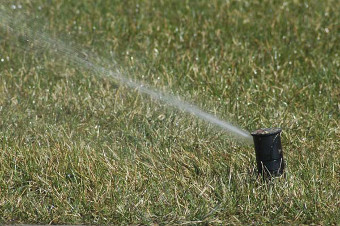
Between the excessive heat and lack of rain last
summer, trying to keep a lawn green has been a
losing proposition. Given the great need to
conserve water to make it last through the
ongoing drought, not being wasteful by
overwatering your yard is extremely important.
But how does one judge if just the right amount
of water is being applied to keep the grass
healthy? Now there is an online tool that can
help you work it out.
The Texas AgriLife Extension Service at Texas
A&M University has developed on online
calculator that will allow people to apply within a
10th of an inch the amount of water their turf
grass needs. That’s no small feat given the
amount of misinformation out there about watering amounts, says Dr. Guy Fipps, AgriLife Extension irrigation
engineer.
“Look at garden sections in newspapers and elsewhere, you’ll typically see recommendations like water 1 inch
to 2 inches a week, or that you should water infrequently and deeply — vague concepts like that,” Fipps said
in AgriLife Today, the extension service’s online magazine.

But the online calculator allows people to plug in
specific information about their area. It uses weather
data from 30 automated scientific weather stations
around the state. It also takes into account the type of
grass, amount of sunlight it gets and other factors,
before spitting out a number of inches of water
needed to sustain a lawn.
Once the calculator provides the recommended
watering amount, the next step is to determine your
sprinkler’s watering rate. There is a simple, low-tech
way to do this. Put out one or more empty tuna cans
in the yard and turn on the sprinkler for 30 minutes.
Then, get a ruler and measure the water’s depth in
each can. Double that amount and you get how many
inches of water your sprinkler puts on the lawn in an
hour.
You can then take that number and plug it in to the
online calculator and it will tell you how often and for
how long you should water each week.
To begin using the calculator, go to
www.texaset.tamu.edu. For more conservation ideas,
go here.